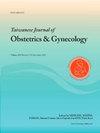与脐带真结相关的危险因素和结果:一项回顾性研究。
IF 2
4区 医学
Q2 OBSTETRICS & GYNECOLOGY
引用次数: 0
摘要
目的:探讨真性脐带结(TKUC)的妊娠结局及独立危险因素。材料与方法:本回顾性研究纳入2017 - 2021年福建省妇幼保健院8140例分娩。诊断为TKUC的母亲和新生儿被纳入TKUC组,而其他人被纳入对照组。这些数据是从医院的电子病历系统中获得的。排除多胎妊娠。结果:TKUC的发生率为0.61%。TKUC组产妇高龄、多胎及两次以上妊娠的比例显著高于TKUC组(P < 0.05)。logistic回归分析结果显示,多胎(OR = 1.386, P = 0.001)、男胎(OR = 1.499, P)是TKUC的独立危险因素。结论:男胎、多胎、脐带缠结,尤其是脐带过长是TKUC的独立危险因素。TKUC对新生儿出生时的状况影响很小,但它与剖宫产和早产的高发率有关。本文章由计算机程序翻译,如有差异,请以英文原文为准。
Risk factors and outcomes associated with true knots of the umbilical cord: A retrospective study
Objective
To investigate the pregnancy outcomes and independent risk factors associated with true knots of the umbilical cord (TKUC).
Materials and methods
This retrospective study included 8140 deliveries at Fujian Maternal and Child Health Hospital from 2017 to 2021. Mothers and newborns diagnosed with TKUC were included in the TKUC group, while the others were included in the control group. The data were obtained from the hospital's electronic medical record system. Multiple pregnancies were excluded.
Results
The incidence of TKUC was 0.61 %. The TKUC group had significantly higher proportions of advanced maternal age, multiparae and mothers with more than two pregnancies (P < 0.05). The neonates in the TKUC group were more male, had longer lengths and umbilical cords, heavier placentas, and a higher incidence of umbilical cord entanglement (P < 0.05). In terms of pregnancy outcomes, the TKUC group exhibited higher rates of cesarean section and preterm birth (P < 0.001; P < 0.05). However, there were no significant differences in birthweight, Apgar scores, stillbirth rate, and neonatal malformation rate between the two groups (P > 0.05). The results of logistic regression indicated that multiparae (OR = 1.386, P = 0.001), male fetus (OR = 1.499, P < 0.001), excessive long umbilical cord (OR = 11.022, P < 0.001), and umbilical cord entanglement (OR = 1.284, P = 0.019) were risk factors for TKUC.
Conclusion
Male fetus, multiparae, umbilical cord entanglement, and especially excessively long umbilical cord were identified as independent risk factors for TKUC. TKUC had a minimal impact on the newborn's condition at birth, while it's associated with higher rates of cesarean section and preterm birth.
求助全文
通过发布文献求助,成功后即可免费获取论文全文。
去求助
来源期刊

Taiwanese Journal of Obstetrics & Gynecology
OBSTETRICS & GYNECOLOGY-
CiteScore
3.60
自引率
23.80%
发文量
207
审稿时长
4-8 weeks
期刊介绍:
Taiwanese Journal of Obstetrics and Gynecology is a peer-reviewed journal and open access publishing editorials, reviews, original articles, short communications, case reports, research letters, correspondence and letters to the editor in the field of obstetrics and gynecology.
The aims of the journal are to:
1.Publish cutting-edge, innovative and topical research that addresses screening, diagnosis, management and care in women''s health
2.Deliver evidence-based information
3.Promote the sharing of clinical experience
4.Address women-related health promotion
The journal provides comprehensive coverage of topics in obstetrics & gynecology and women''s health including maternal-fetal medicine, reproductive endocrinology/infertility, and gynecologic oncology. Taiwan Association of Obstetrics and Gynecology.
 求助内容:
求助内容: 应助结果提醒方式:
应助结果提醒方式:


